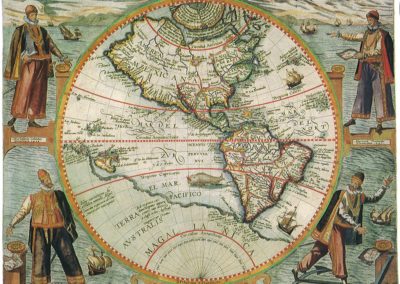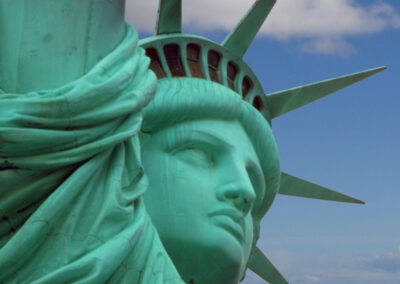Macaws – The Intelligent, Brightly Colored Birds
The facial feather pattern of a macaw is as unique as a human fingerprint.
By: Kirsten Brooker | August 7, 2025 | 639 Words

(Photo by Mateus Bonomi/Anadolu via Getty Images)
Macaws are beautiful and playful birds that live in the rainforests and tropical jungles of Africa, Brazil, Mexico, Honduras, and other areas of Central and South America. They live an exceptionally long life, sometimes well beyond 60 years, even in the wild. Still, all 17 species of macaws are at risk of extinction.
Ancestry and Evolution
Macaws have been around for millions of years. Fossil records indicate that they were present during the Eocene epoch, which lasted from roughly 56 to 33.9 million years ago. Even then, the beautifully colored birds were used as symbols of status, royalty, and nobility. The parrot-like birds get their color from their diet and chemical pigments within their bodies.
There are 17 species of macaw, the largest being the hyacinth. All of them are part of the Psittacidae (meaning true parrots) order and are separated into two subfamilies: Old World parrots and New World parrots. Members of the Old World are less colorful than those of the New World.
Appearance
 Along with their bright coloring, macaws can weigh between two and four pounds. They are approximately 30-39 inches in length and have long tails, which separates them from parrots, along with proportionately larger beaks and somewhat bare, lightly colored face patches (medial). The facial feather pattern is just as unique as human fingerprints.
Along with their bright coloring, macaws can weigh between two and four pounds. They are approximately 30-39 inches in length and have long tails, which separates them from parrots, along with proportionately larger beaks and somewhat bare, lightly colored face patches (medial). The facial feather pattern is just as unique as human fingerprints.
Like other parrots, toucans, and woodpeckers, the first and fourth toes of macaws point backward, allowing them to grip limbs, climb trees, and sift through foliage. This feature is called zygodactyl.
Diet and Habitat
Macaws are omnivores, meaning they eat foods of both plant and animal origins. Their primary source of food is fruit, though the animals also love to indulge in different kinds of nuts and sometimes insects, snails, and small reptiles. The macaw’s strong beak can break through the hard shells around nuts like almonds and Brazil nuts. Large macaws like the hyacinth benefit from the high calories and fat content found in nuts.
Macaws live in nests that they build in the knots and crevices of trees. Some will make their homes in the rotted trees on the savannahs of South America, while other species prefer rocky cliffs or riverbanks.
Reproduction and Lifespan
Between two and ten years of age, a female macaw will reach sexual maturity. Once mated, she will lay between two and four eggs. After about 24-28 days of incubation, the eggs will hatch. If the hatching is successful, the female typically waits about two years before mating again.
The baby macaws will stay in the nest for about three months after birth. Both parents are protective of their young babies. After about a year, the birds will venture out to find a flock to join.
Macaws live exceptionally long lives. On average, they live to be 60 or older, though some species only live to be about 30-35, and others live up to 80 years old.
Predators
A long list of hunters threatens the life of the beautiful birds, including large birds of prey (eagles and falcons), snakes, monkeys, and larger animals such as jaguars and ocelots.
Nearly all species of macaw are endangered, and some have already reached extinction status. Deforestation and illegal trapping are creating a steady decline in the macaw population.
Interesting Facts About Macaws
- Macaws are social animals and commonly live in groups.
- Some macaws can mimic human speech.
- Macaws can fly at speeds up to 35 mph.
- Being intelligent birds, macaws can learn tricks and solve problems.
- Macaws are known to be friendly and playful and make great pets.

- Macaws live exceptionally long lives, on average 60 years or older, though some species only live to be about 30-35, and others live up to 80 years old.
- To communicate with one another, macaws scream, squawk, and whistle.
- The facial feather pattern of a macaw is as unique as a human fingerprint.
















